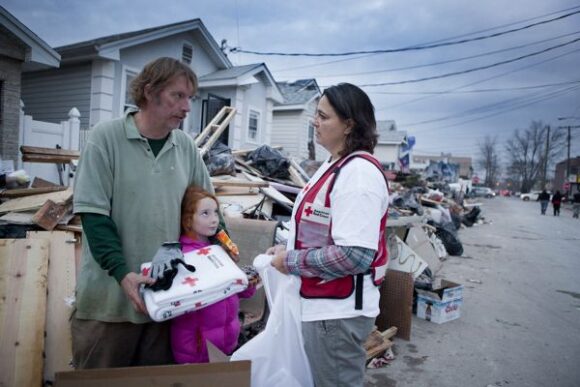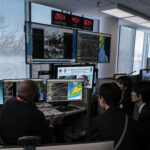In the immediate aftermath of hurricanes, floods and other disasters, it’s not uncommon for people to turn out in large numbers to assist victims, clear debris and chip in on dozens of other tasks to get a community back on its feet.
Their altruism is inspiring, but results of a study by a Johns Hopkins expert suggest these unsolicited or “spontaneous” volunteers may be putting themselves and others at risk for injury and, in rare cases, death as a result of their lack of training in safe and proper disaster response.

In a report published online on March 25 in advance of the print edition of Disaster Medicine and Public Health Preparedness, Lauren Sauer, M.S., surveyed 24 nongovernment volunteer organizations (NVOs) that had responded to disasters in the past and found that 19 of them — or 79 percent — had spontaneous volunteers show up to help. While a majority of those organizations said they found such volunteers useful, 42 percent reported that volunteers had been injured in the response, and there were two reported deaths among them. Organizations were allowed to respond anonymously as a way to encourage survey participation.
Sauer, a disaster training expert and faculty member in the Johns Hopkins University School of Medicine’s Department of Emergency Medicine, says she decided to conduct her survey when she found that the level of risk such volunteers may face had never been well-studied despite how ubiquitous the volunteer phenomenon is in the United States.
“In the U.S., it’s very common to see a big outpouring of volunteers after a disaster. People feel compelled to turn out,” Sauer says, noting that after the Sept. 11 terrorist attacks in New York City, 40,000 volunteers streamed to ground zero. “What’s interesting is no one’s taken a close look at the level of risk for the people who show up after these disasters without any training on how they can stay out of harm’s way.”
Sauer also found that:
- Only about one-third of the organizations responding to the survey said they accepted any legal liability for unsolicited volunteers.
- Sixteen percent of organizations reported lawsuits as the result of casualty among unsolicited volunteers.
- Two organizations always made sure that the volunteers they tapped in a disaster had prior response training, called “credentialing.”
- Only one organization performed background checks on volunteers.
- More than half — 53 percent — of the groups said they provided on-the-spot or “just-in-time” training for volunteers turning out to a disaster site.
Prior to her survey, Sauer reviewed studies documenting psychological stress among untrained volunteers in the wake of their disaster experience and found that post-traumatic stress disorder was common.
Overall, Sauer says, her research raises a number of compelling volunteer safety and liability issues that need to be addressed with further studies and the development of a safer, more systematic approach to taking on unsolicited and untrained volunteers in the field right after a calamity.
There are some models worthy of consideration, says Sauer. For example, the community service organization Points of Light Foundation, based in Atlanta, recommends that a “go kit,” which includes training information, be issued to volunteers prior to them being allowed into a disaster area to assist.
“The presence of spontaneous volunteers is unavoidable after a disaster. They are always well-intentioned and have a high level of altruism. We don’t want to discourage that,” says Sauer. “But it does appear from this study that the NVOs need to take a harder look at safety and liability issues. The goal should be minimizing any risk of harm to their volunteers.”
Co-authors on the study include Christina Catlett, M.D., an assistant professor in the Johns Hopkins University School of Medicine’s Department of Emergency Medicine; and Thomas Kirsch, M.D., M.P.H., an assistant professor in the Johns Hopkins University School of Medicine’s Department of Emergency Medicine and the Bloomberg School of Public Health.
Source: Johns Hopkins Medicine
Was this article valuable?
Here are more articles you may enjoy.


 Bankruptcy Judge Shoots Down $10 Billion J&J Settlement
Bankruptcy Judge Shoots Down $10 Billion J&J Settlement  State Farm Has Paid $2.5 Billion in Claims for LA Wildfires
State Farm Has Paid $2.5 Billion in Claims for LA Wildfires  Family of Canadian CEO Killed in Helicopter Crash Files $35 Million Lawsuit
Family of Canadian CEO Killed in Helicopter Crash Files $35 Million Lawsuit  US Weather Service Merges Units as Staffing Pressure Rises
US Weather Service Merges Units as Staffing Pressure Rises 